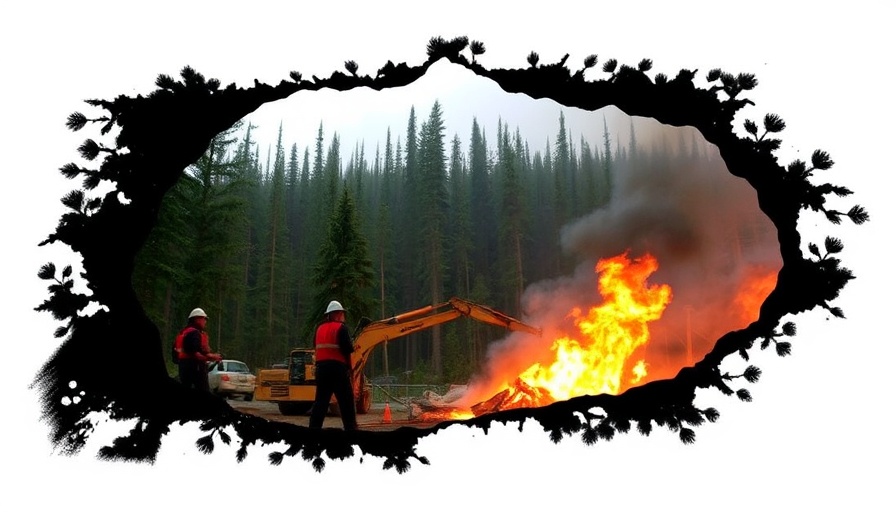
Revolutionizing Forest Conservation in Alaska: The Tlingit Way
In a groundbreaking initiative that merges traditional Indigenous stewardship with contemporary conservation practices, Tlingit crews are using modern techniques to breathe new life into Alaska's magnificent Tongass National Forest. This unique intersection of culture and ecology not only highlights the importance of preserving the rainforest but also showcases the traditional knowledge held by the Tlingit people, offering a holistic model for environmental sustainability.
Understanding the Sacred Territory
The Tongass, the United States' largest national forest, stretches over 17 million acres and is densely packed with unique wildlife and intricate ecosystems. Central to this forest is Admiralty Island, known to the Tlingit as Kootznoowoo, or "fortress of the bear." This sacred landscape has been home to the Tlingit for at least 10,000 years, making their efforts to restore it both a cultural necessity and an ecological imperative. The team's determination to restore streams and salmon runs deepens their connection to their ancestral land, allowing them to reclaim a narrative that has been historically overlooked.
The Groundbreaking Blasting Technique
At the heart of this conservation effort is a historic land buyback by the US Forest Service, enabling the Tlingit to start extensive restoration projects. Under the guidance of Jamie Daniels and expert USDA Forest Service blasters, they are quite literally blasting away obstacles to restore natural waterways that support salmon populations essential for both wildlife and the local community’s livelihood.
As spectators stand hundreds of yards away, bracing for the blast, the experience captures a collective moment of anticipation. With a resounding blast that echoes across the valley, a new vision for the future of the Tongass unfolds. This traditional approach to blasting embodies a symbiotic relationship with nature and serves as a reminder of how historical tactics can innovate modern practices.
Broader Implications for Environmental Sustainability
Beyond the immediate goal of restoring the forest, this initiative opens significant avenues for discussions on Indigenous land rights and environmental responsibility. The Tlingit’s approach demonstrates how Indigenous knowledge systems can play a vital role in contemporary environmental strategies, urging policymakers and conservationists to recognize and respect these invaluable insights.
With climate change threatening diverse ecosystems globally, the Tongass restoration efforts present a sustainable blueprint for addressing environmental challenges. By reintegrating cultural ecology with modern practices, we can forge a path forward that balances human needs with the demands of the Earth.
Inviting Community Engagement
This initiative also speaks to community involvement. Homebuyers, sellers, and investors interested in the Dumfries market should recognize the importance of investing in local ecosystems. Sustainable practices, such as supporting Indigenous-led conservation efforts, not only enhance property values but contribute to a healthier environment.
By aligning real estate endeavors with ecological sustainability, investors can cultivate homes and communities that thrive in harmony with nature. This creates a compelling opportunity for individuals looking to make responsible choices that reflect both environmental and economic considerations.
Final Thoughts: Embracing the Future of Conservation
The vision of restoring the Tongass through explosive demolition and careful planning represents a melding of past and present—a narrative where the Tlingit honor their ancestors while engaging in innovative conservation methods. As we look to the future, let us carry forward the lesson that fostering a mutualistic relationship with nature isn’t just beneficial; it’s essential for our survival.
For those considering a move into environmentally conscious real estate ventures, there has never been a more vital time to engage with sustainable practices and uphold the voices of Indigenous communities leading the charge in conservation.
 Add Row
Add Row  Add
Add 





Write A Comment